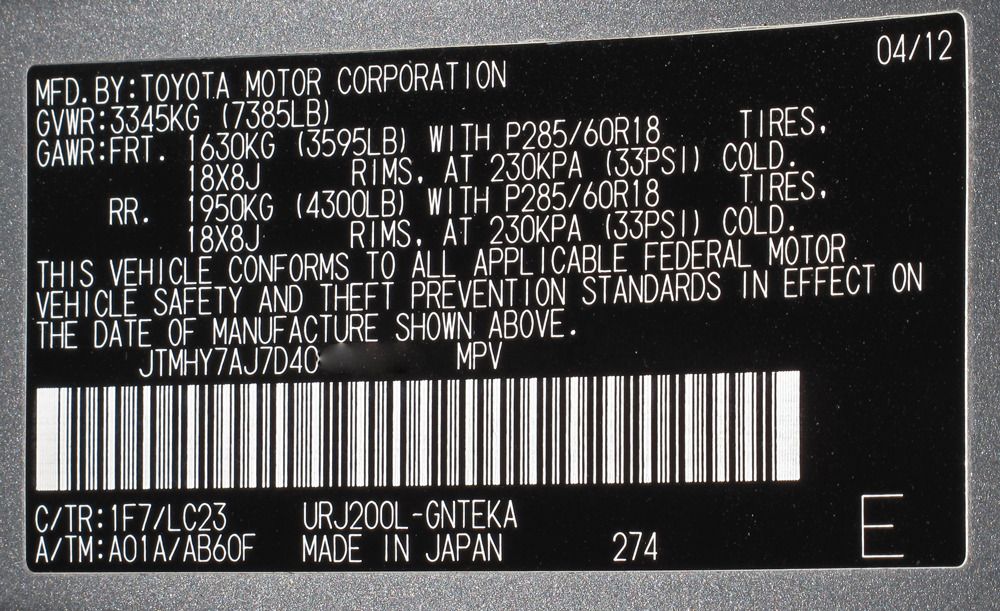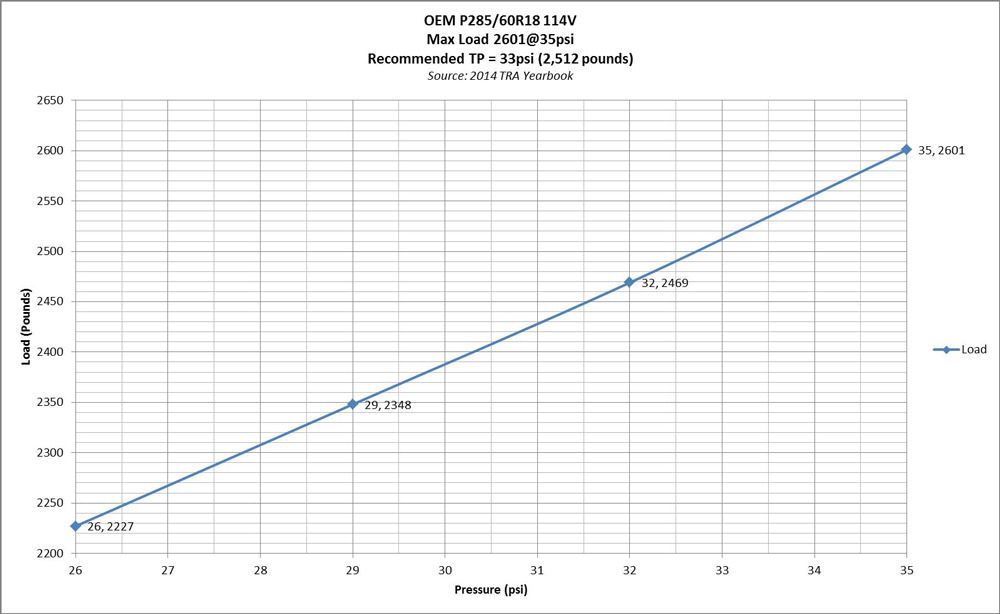- Thread starter
- #61
Ok got it. It's fully rigged with drawers, fridge bumpers, Sliders, Rack- etc so looks like 45 it is. Have close to 500 pounds - even with rear seat delete.
This is another method I found here on mud....
Posted by LandcruiserPhil, that he pulled from somewhere else...
I worked for Michelin Tire Corporation for 7 years and Yokohama Tire Corporation for 11 years. I have given numerous tire seminars on tire maintenance and especially how to determine the correct tire pressures. So here goes.
The pressure on the sidewall of the tire is the maximum pressure at the published load at approximately 55 mph. (The speed can vary somewhat but it is not important for our discussion).
The air pressure is required to support the load that the tire must carry in such a manner that the tire flexes at the designed place on the sidewall of the tire.
If the load on the tire changes then the air pressure should change accordingly to keep the tire flexing at the proper place.
The reason for correct air pressure is to prevent the tire from overheating. It was put together with heat and it will come apart the same way. An under inflated tire will eventually self destruct due to excessive heat build up. An over inflated tire will ride harshly and be more likely to burst upon impact. Sorry for the long explanation but here is the bottom line.
To determine the correct air pressure, check the pressure when the tire is cold. Run the tire for several miles at highway speed. Stop and immediately check the air pressue in the tire. It should be higher than we cold but no more than 10% higher.
Now here is the hard to believe part. If the pressure is more than 10% higher you must ADD AIR and test again. For example if you start with 50 psi cold. If the pressure is 60 when hot, you have exceeded the (10%) in this case, 55 psi maximum safe heat build up pressure. You must ADD AIR. In this case I would add 5 psi which would take the tire to 65 psi when hot. After you run the tire again you will find the pressure to actually drop because the tire will run cooler. The heat build up causes the tire pressure to increase when under inflated.
On the other hand, if the 50 psi cold pressure does not change when hot. You have more air than needed. You can remove 5 psi or so and test again when they return to cold. Like the next trip you take.
So a fully loaded rig will require more air in the tires than one with empty tanks and a light load on board. Always error on the side of over inflation. Thus the maximum sidewall pressure indicated on the tire is usually used. It usually is more than needed. Each axle has its own requirement based upon the load on that axle.
So how do I get a 2 Rivet rating? Does this long explanation help or hurt?
Science.






 Have fun! Im outta here!
Have fun! Im outta here!